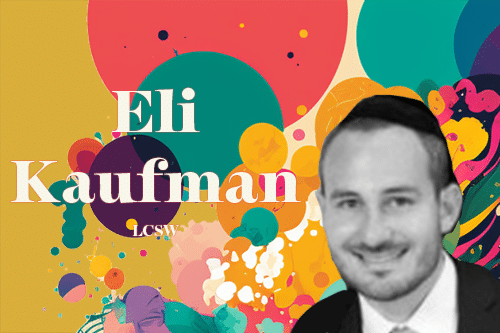
In this new series of articles, we reach out to therapists using our platform to discuss how they’ve incorporated technology and new techniques to help their patients get more out of therapy, and ultimately improve their practice.
In each installment, we’ll feature a different therapist who will share their unique journey, the challenges they’ve faced, and how Reflective impacted their clients and their practice. Through this feedback, we’ll explore various therapeutic techniques and the integration of technology into practice.
By highlighting other therapists’ diverse paths and experiences, we hope to foster a deeper sense of connection and community among mental health professionals.
Today, we have the pleasure of speaking with Connie Meyerowitz of Tactic Baltimore, a small practice of four therapists located in Baltimore. Connie participated in our research study and was kind enough to share her experience using Reflective. Join us as we delve into Connie’s journey, her favorite therapeutic tools, and her vision for the future of mental health care.
Reflective: Please describe the therapeutic modalities you employ in your practice.
Connie: In my therapeutic practice, I employ a range of modalities to support my clients, including Acceptance and Commitment Therapy (ACT), Cognitive Behavioral Therapy (CBT), Dialectical Behavior Therapy (DBT), and psychodrama. Creative techniques such as the empty chair method and art therapy are integral components of my approach.
The empty chair technique, from Gestalt therapy, involves a client engaging in a dialogue with an imagined person or part of themselves, represented by an empty chair. This method helps confront and resolve current conflicts by encouraging self-awareness and emotional expression.
Additionally, I focus on psychosomatic methods, encouraging clients to connect with their bodies and understand the messages they convey.
Reflective: Describe your work with teenagers and adults.
Connie: The majority of my clients are teenagers and adults, primarily female, dealing with issues like anxiety, depression, trauma, relationship problems, and life transitions. I use a variety of tools to assist them, often incorporating creative and interactive methods.
For instance, in psychodrama, we might use art supplies for drawing or everyday items in the room, like an empty chair for role-playing exercises. Journaling, both during and outside of sessions, is another common practice to help clients articulate and process their thoughts and feelings.
Reflective: What Techniques do you use for developing emotional awareness?
Connie: To enhance emotional awareness, I frequently use feelings charts to help clients identify and label their emotions. This process involves more than just worksheets or books; it’s about tapping into their internal experiences to understand what they are going through, to help them put a label on how they feel.
Sometimes, clients are given homework or tasks to complete outside of sessions, such as mindful activities or journaling about their feelings and experiences.
Reflective: What has been the role of Reflective in your practice?
Connie: Reflective has been instrumental in maintaining client engagement between sessions. It allows me to monitor their progress on assignments like journaling or mindfulness exercises.
Clients can share their reflections with me, and this ongoing feedback helps reinforce their commitment to the therapeutic process. Reflective also enables clients to process trauma by listing changes before and after the traumatic event, fostering a deeper understanding and acceptance of their experiences.
Reflective: What do you like most about using Reflective?
Connie: One significant advantage of Reflective is the increased accountability it provides. Clients feel a greater sense of responsibility to complete their assignments, knowing their therapist will check in on their progress. This system also makes therapeutic tasks more accessible and manageable, especially for virtual clients who might struggle with traditional paper and pen methods.
Reflective: How have you customized Reflective for your needs?
Connie: Reflective allows me to create customized assignments tailored to each client’s specific needs. I’ve used several assignments for clients, including a gratitude journal and a general journal, which provides blank space for writing whatever is on their minds. Another useful tool is a feelings tracker to help them monitor their emotions daily. For those dealing with anxiety, I’ve introduced a worry journal where clients list three things they’re worrying about and identify what is within their control and what is not. This is complemented by a separate assignment focused specifically on distinguishing controllable aspects from uncontrollable ones.
Many of these tools are particularly helpful for clients dealing with anxiety and depression. For example, the gratitude journal encourages a positive mindset. Additionally, for clients processing trauma, I created an assignment where they first label the trauma and then discuss the gains and losses associated with their experience. This exercise helps them understand the impact of the trauma in a structured way.
Some of these activities can be done during sessions. Often, I’ll bring up the assignments they were supposed to complete outside of our meetings but didn’t have time for, allowing us to work on them together. This approach gives clients the opportunity to process these activities at their own pace at home, providing the time they need to reflect deeply. Given that sessions are typically only 45 to 50 minutes, having these assignments allows clients to engage with the material more thoroughly outside of our sessions. They can then share their reflections with me, offering flexibility and making our sessions more interactive and productive.
Reflective: How do you feel about digitizing key aspects of your practice?
Connie: With the rise of virtual therapy, especially since COVID-19, having a tool like Reflective is invaluable. It facilitates seamless communication and homework assignments, ensuring that clients can engage in their therapeutic work even when we’re not face-to-face. This adaptability is crucial in maintaining the effectiveness of therapy in a digital age. Clients are already on their phones, all the time, so this is a lot easier for them.
I understand that some therapists might resist adopting new technologies. Change can be daunting, especially when current methods seem effective. However, integrating tools like Reflective offers numerous benefits, including enhanced personalization and the ability to tailor assignments specifically to each client’s needs. This level of customization is often not possible with traditional paper worksheets.
Reflective: How would you describe the benefits of Reflective to your colleagues?
Connie: Reflective is versatile and can be integrated into various therapeutic approaches. Whether it’s for CBT, DBT, trauma processing, or general reflective journaling, this tool supports a wide range of therapeutic goals. It enables therapists to create a more personalized and effective treatment plan, ultimately enhancing the therapeutic experience for clients.
In conclusion, the integration of Reflective into therapy offers numerous advantages, from increased client accountability to enhanced accessibility and personalization. By embracing these tools, therapists can better support their clients’ mental health journeys, fostering growth, healing, and resilience in a seamless and effective manner.


